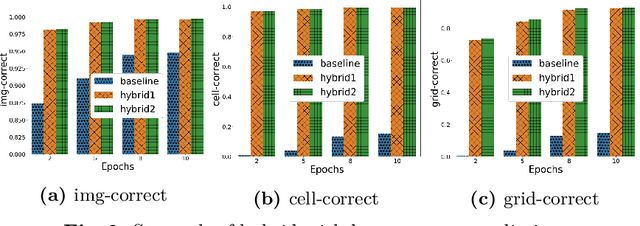Hybrid Classification and Reasoning for Image-based Constraint Solving
Paper and Code
Mar 24, 2020



There is an increased interest in solving complex constrained problems where part of the input is not given as facts but received as raw sensor data such as images or speech. We will use "visual sudoku" as a prototype problem, where the given cell digits are handwritten and provided as an image thereof. In this case, one first has to train and use a classifier to label the images, so that the labels can be used for solving the problem. In this paper, we explore the hybridization of classifying the images with the reasoning of a constraint solver. We show that pure constraint reasoning on predictions does not give satisfactory results. Instead, we explore the possibilities of a tighter integration, by exposing the probabilistic estimates of the classifier to the constraint solver. This allows joint inference on these probabilistic estimates, where we use the solver to find the maximum likelihood solution. We explore the trade-off between the power of the classifier and the power of the constraint reasoning, as well as further integration through the additional use of structural knowledge. Furthermore, we investigate the effect of calibration of the probabilistic estimates on the reasoning. Our results show that such hybrid approaches vastly outperform a separate approach, which encourages a further integration of prediction (probabilities) and constraint solving.
 Add to Chrome
Add to Chrome Add to Firefox
Add to Firefox Add to Edge
Add to Edge